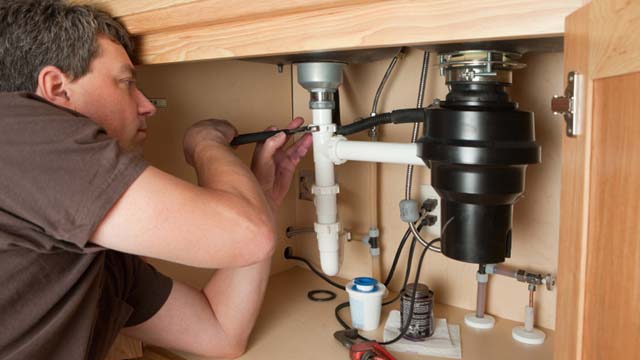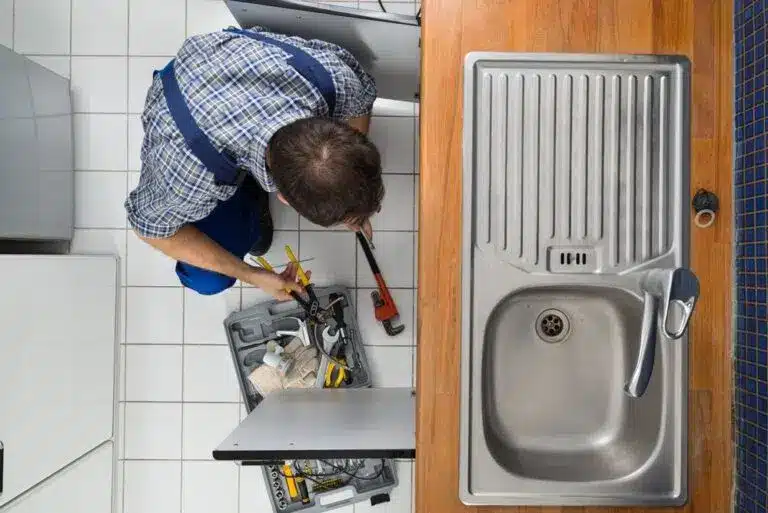Nearly everybody has their own individual beliefs involving The Handy Guide To Fixing Your Garbage Disposal Leaking.

Waste disposal unit are crucial kitchen home appliances that help in disposing of food waste successfully. Nevertheless, a dripping waste disposal unit can be a frustrating and untidy problem to handle. The good news is, many leakages can be taken care of quickly with a couple of easy actions. In this write-up, we will certainly talk about how to take care of a leaking waste disposal unit efficiently.
Intro
Garbage disposals are set up under kitchen sinks and are created to shred food waste right into smaller sized items, allowing it to travel through the plumbing system easily. While these gadgets are normally dependable, leakages can take place with time because of deterioration, loose links, or damages to the device.
Step-by-Step Guide to Fixing a Dripping Waste Disposal Unit
Switch off the Power
Prior to attempting any repairs, make sure that the power to the garbage disposal device is switched off to prevent the risk of electrical shock.
Situate the Leakage
Identify the precise area of the leak and identify the cause
Tighten up Links
Use a wrench to tighten any type of loosened links between the disposal unit and the pipes system.
Replace Seals or Gaskets
If the leak is due to worn seals or gaskets, eliminate the old parts and change them with new ones.
Patching Splits or Holes
For splits or holes in the disposal unit, use epoxy or an ideal patching product to seal the broken area.
Determining the Source of the Leakage
Prior to attempting to fix a leaking garbage disposal, it is vital to determine the resource of the leak. This can typically be done via aesthetic inspection or by carrying out basic tests.
Visual Evaluation
Evaluate the garbage disposal system thoroughly for any kind of indications of water leakage. Pay very close attention to areas around seals, gaskets, and link points.
Checking for Leakages
One method to examine for leakages is by running water with the disposal system and checking for any noticeable indications of leak.
Typical Sources Of Leakages in Trash Disposals
Worn Seals and Gaskets
Seals and gaskets play an essential function in avoiding water from dripping out of the waste disposal unit. In time, these parts can degrade, bring about leakages around the disposal system.
Loose Links
The connections in between the garbage disposal and the pipes system can become loose in time, triggering water to leak out throughout procedure.
Splits or Openings in the Disposal Device
Physical damages to the garbage disposal, such as cracks or openings in the housing, can likewise lead to leaks.
Devices and Products Needed for Taking Care Of a Leaking Garbage Disposal
Before beginning the repair service process, collect the needed devices and materials, consisting of a screwdriver, adjustable wrench, plumbing's putty, substitute seals or gaskets, and epoxy or patching material for repairing splits or openings.
Testing the Garbage Disposal After Repair Service
When the repair is complete, examine the waste disposal unit by running water via it to make certain that the leakage has actually been dealt with.
Preventive Maintenance Tips to Prevent Future Leakages
To stop future leaks, it is necessary to do normal maintenance on your garbage disposal. This consists of keeping it clean, avoiding putting non-food items or tough items down the disposal, and regularly looking for leakages or various other problems.
Final thought
To conclude, taking care of a dripping garbage disposal is a fairly uncomplicated process that can be completed with fundamental tools and materials. By adhering to the actions described in this write-up and practicing preventative maintenance, you can keep your waste disposal unit in good working problem and avoid pricey repair work in the future.
What to Do About a Leaking Garbage Disposal
A leaking garbage disposal often goes unnoticed until you confront a sopping cabinet, a foul-smelling puddle, or an audible drip-drip-drip from the unit. The fix can be frustrating, too, because the leak can stem from a number of components in the system. Fortunately, with a little sleuthing, you can zero in on the leak and—depending on the exact location—stop the icky oozing and repair the component that caused it. Worst case scenario, if it turns out that the garbage disposal must be replaced, installing a new one is a reasonable do-it-yourself task for those with basic plumbing skills. Read on to keep the cash you’d otherwise hand over to a pro.
Prepare to find the leak
Prior to testing the garbage disposal for leaks, unplug it at the wall outlet and turn off the power from the breaker box to prevent electrical shock. Then insert a watertight sink stopper into your sink drain and wipe the unit dry with a clean cloth. In any handy container, mix a few drops of food coloring into a few cups of water, and pour the dyed water onto the sink stopper to help you locate the leak.
Investigate the source
the top, where the disposal meets the sink drain the side, where the dishwasher hose or main drain pipe connects to the disposal or the bottom of the unit Inspect each of these locations while gliding a light-colored rag over the unit; the dyed water will readily show on the rag and reveal the location of the leak. If a leak isn’t immediately apparent, remove the sink stopper and pour a few more cups of dyed water down the sink drain, then check for leaks again. Leaks near the top of the unit are more likely to show themselves while the sink is plugged, while side and bottom leaks are more noticeable while the sink is unplugged.
The metal sink flange that sits directly inside the sink drain is typically sealed around the top with plumber’s putty (a clay-like sealant) and then secured from under the sink with bolts. If the plumber’s putty deteriorates, or the bolts loosen, the flange can no longer form a watertight seal between the sink drain and the disposal—which could cause a leak at the top of the unit.
To reseal the leaky flange, you must first detach the garbage disposal. Start by loosening the screws securing the main drain pipe to the disposal, then loosen the screws in the metal clamp securing the dishwasher hose to the disposal and detach the drain pipe and dishwasher hose from the disposal. Loosen the screws in the mounting ring that connects the disposal to the metal mounting assembly beneath the sink, then pull down the disposal and carefully set it on a clean, dry surface. Loosen the bolts in the mounting assembly with a wrench, then pull down the mounting assembly and set it near the disposal.

I have been very inquisitive about Tips on Fixing a Leaking Garbage Disposal and I'm hoping you appreciated the entire article. If you enjoyed reading our page kindly be sure to share it. I truly appreciate reading our article about Why Is .
Book Your Service